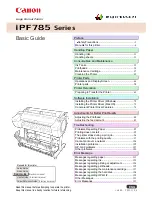
General Information
1-77
implemented using a Cirrus Logic CL-CD1284. The parallel port uses
a 36 pin IEEE 1284 connector on the rear panel. The serial port
provides RX and TX only with no handshaking. It is connected via a 5
pin square post 0.1" centers connector recessed into the rear panel.
The CL-CD1284 general purpose 8-bit parallel 55º port is used for the
following functions:
BIT #
FUNCTION
DESCRIPTION
0
Input
Service mode switch 1
1
Input
Service mode switch 2
2
Input
Service mode switch 3
3
Output
Reset control tor NETCHIP 2890
4
Input
Bit 1 of the 2 bit board version number
5
Input
Bit 2 of the 2 bit board version number
6
Input
Parallel Port master ready (host logic high)
7
Output
Parallel slave ready (peripheral logic high)
Optional Ethernet Interface Card (100 Base T)
The optional Ethernet Interface card has an RJ-45 connector, a 50-
ohm BNC (coax) connector and four LEDs on the rear panel. The card
includes a DEC 21143 Ethernet MAC, an ICS 1890 MII PHY and an
82C92 coax transceiver. There are no jumper or switch settings on the
card. It supports 100Mbit connections over the RJ-45 connector using
two pairs of category 5 cable at up to 100 meters (l00 Base-TX), or
10Mbit connections over the same connector using two pairs of
category 3 (or greater) cable at up to 300 meters (10 Base-T). The card
fully supports 802.3u clause 28 autonegotiation with parallel
detection at 10 and 100 Mbits/sec on the RJ45 port. When connected
to a hub switch port, the printer will determine the best possible
speed and duplex setting, either 100Base-TX full-duplex, 100Base IX
half-duplex, 10Base-T full-duplex or l0Base T half-duplex. If the RJ-
45 port is not connected or the link to the hub/switch fails (e.g. due to
a cable fault), the card will switch to 10Mbit/sec half-duplex operation
over the coax (BNC) interface. Users should not connect cables to both
ports; doing so will not disrupt the customer’s network but may
prevent the printer from communicating properly.
The operating mode of the interface may be determined from the
Network Type parameter or by observation of the back-panel LEDs.
There are four LEDs mounted in a square pattern. The upper two
LEDs are yellow; the bottom two are green. The left-hand pair of
LEDs indicate activity: the green LED will flash when the card is
receiving data from the network and the yellow LED will flash when
the card transmits data to the network. The right-hand pair of LEDs
indicate the operating mode. The top right yellow LED will be on
when the speed is 100Mbits. It is off for l0Mbits. The bottom right
green LED will be on when the twisted-pair (11145) connector is in
use and there is a good link to a hub. It will be off if the link fails or
when the coax (BNC) connector is selected.
Summary of Contents for Nuvera 100
Page 1: ...General Information 1 1 Chapter...
Page 24: ...1 24 ii LINX Solid Inkjet 100 Service Manual 1239 35b Figure 1 13 Repacking the Printer...
Page 27: ...General Information 1 27...
Page 28: ...1 28 ii LINX Solid Inkjet 100 Service Manual...
Page 79: ...Error Codes and Messages 2 1 Chapter...
Page 101: ...Troubleshooting 3 1 Chapter...
Page 145: ...Adjustments 4 1 Chapter...
Page 180: ...4 36 ii LINX Solid Inkjet 100 Service Manual...
Page 181: ...Cleaning and Maintenance 5 1 Chapter...
Page 190: ...5 10 iiLINX Solid Inkjet 100 Service Manual...
Page 191: ...Removal and Replacement 6 1 Chapter...
Page 249: ...Printer Networking 7 1 Chapter 7...
Page 280: ...7 32 ii LINX Solid Inkjet 100 Printer Service Manual...
Page 281: ...Material Number Listings A 1 Appendix...
Page 285: ...Material Number Listings A 5 7 5 6 8 1 2 4 0388 21 3 Figure A 1 Cabinet parts...
Page 289: ...Material Number Listings A 9 0388 16 2 1 5 11 10 9 12 6 4 3 7 13 8 Figure A 3 Paper Path Parts...
Page 291: ...Material Number Listings A 11 0388 14 7 4 3 5 6 2 1 Figure A 4 Motor and Fan Parts...
Page 295: ...Material Number Listings A 15 4 5 3 2 1 0388 23 Figure A 6 Solenoid and Clutch Parts...
Page 304: ...A 24 ii LINX Solid Inkjet 100 Service Manual...
















































